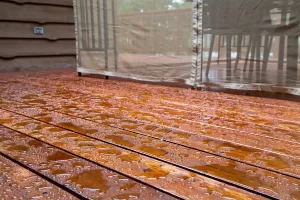Seven Ways to Baby Proof Your Home
Baby proofing your home simply means adjusting everything in it to prevent a baby or toddler from injuring him or herself. Often times, this means taking care of the obvious danger points, such as electric sockets. However, it also means upgrading objects that might scratch, bump, or seriously injure your precious child.
1. Corners
It is amazing how many sharp edges your home can have. For instance, they on chairs, tables, and hearths. It is also amazing how your baby will somehow find them. A great way to determine where all of your sharp corners are is to get down at your baby’s level and simply look.
Once you have found all of the potentially dangerous corners, you should invest in soft corner guards. They are easy to install and will provide daily protection for your baby’s head and face. Additionally, for added peace of mind, you can super glue the guards to the corners so that busy little hands cannot remove them.
2. Crib
When it comes to the choice of style or color for your baby’s crib, that is, of course, a personal one. However, when it comes to choosing a crib that is safe, personal preference does not count. Any crib you choose must have fixed rails. This will ensure that the railings do not drop unexpectedly, causing serious injury or an unsafe situation for your baby. If you are using an older crib, you should purchase an immobilizer for the drop-side rail.
Next, check the space between the slats. If a soda can can slide between the slats, so can your baby’s head. You should also never allow soft items, such as bumpers, pillows, and stuffed toys in your baby’s crib while he or she sleeps. Even a soft blanket can pose a dangerous sleeping environment.
3. Blinds
As anyone with a child knows, the cords on blinds pose a serious danger of choking. A baby learning to walk or stand might grab hold of the drawstring. Because these drawstrings are thin and taut, they can easily cut into a baby’s hand. More hazardous is the fact that these drawstrings can become choking or strangling hazards.
For instance, if a baby gets tangled in one, he or she will only have minutes to avoid being severely or permanently hurt. To prevent this possibility, you can tie all of the cords until they are at a height your child cannot reach. However, a more effective method is to cut the cords and re-tie them at a height of 48 inches. Doing so will ensure that as your child grows, he or she does not eventually reach a cord you forgot all about. Of course, another method is to ensure you do not put high chairs or cribs near the windows.
4. Gates and fences
Baby gates in front of rooms or stairways are essential ways to ensure a baby cannot get into an otherwise baby-unfriendly room. Additionally, a baby gate at the top of the stairs and also at the bottom will ensure your child does not end up in a situation where he or she can fall down a flight of stairs.
Interior gates are important. However, equally important are exterior gates and fences. For instance, if you have a pool, you should contact a fence installation company, such as Wood Glass Group pool fencing. It only takes a moment for a child to move across a yard and fall into a pool. Having a quality fence around the pool is the only way to ensure your child remains safe.
5. Appliances
Many times, appliance doors open easily. For a refrigerator, you can buy a suction-cup door blocker that spans both doors, preventing a child from being able to open the door. Additionally, for a dishwasher, you can purchase a safe-shut gadget that hooks onto the counter and drapes securely over the edge of the door. With the dishwasher secured, your child will not be able to pull it open.
Additional ways to childproof your kitchen is to ensure electrical cords are not dangling down where they can be grabbed. If a child can grab a cord, a toaster, for instance, can be pulled down on his or her head. For safety, ensure all appliances are plugged in at the counter level.
6. Furniture
Drawers, dressers, or bookshelves should be fixed to a wall. To do this, you will need to purchase L-brackets and screw one end into the piece of furniture and the other end into the wall. Doing so will ensure that as your baby learns to walk, he or she does not inadvertently pull him or herself up via a shelf and pull the shelf down on his or her little head.
7. Electric sockets
Of course, the one thing that absolutely must be done is to plug in child-safety stoppers into each and every socket. Sockets are one thing you cannot move. Consequently, you must plug them. Otherwise, you are setting your home up as a catastrophic situation just waiting to happen.








